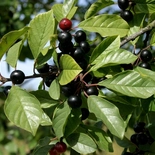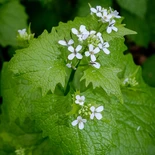Something has become glaringly apparent to me over the last 10 years or so, ever since my concerns about invasive weeds firmly took hold: greater education about the fragile and amazing that surrounds and sustains us could not be more needed.
This is an excerpt from the Wild Ones Journal
Current members can log in to read the latest issue or check out the Journal Archives.
A tragedy is silently but relentlessly unfolding before our eyes, but so many cannot see. All around the world, as the human population becomes increasingly mobile, the spread of ecologically invasive plants is taking its toll. Yet few people recognize these weeds of the wild or are aware of the consequences of allowing them to proliferate.
As defined by an Executive Order from President Clinton in 1999 that called for increased national attention to, and coordination of, control of invasive non-native species, an “invasive plant” is “an alien species whose introduction does or is likely to cause economic or environmental harm or harm to human health.” (Alien plants are also sometimes referred to as exotic, non-native, or non-indigenous species.)
It is important to note that the vast majority of non-native plants, about 85%, cause little if any environmental damage, other than perhaps taking up space that could be occupied by native species. They politely occupy their place in the landscape and pose little threat to natural areas. Even our food supply is even primarily made up of exotic species.
But some exotic plants are not so innocent. Once removed from their native habitats, they begin to reproduce abundantly in their new settings, causing significant environmental disruption. Invasive plants have competitive advantages over native plant species that often include:
- An absence of the insect predators and plant diseases that helped to keep their numbers in check in their homelands.
- A longer growing season that allows them to shade out native plants before the natives have a chance to grow, or to take more than “their share” of moisture and nutrients from the soil.
- An astonishing ability to reproduce and form colonies in disturbed soil due to rapid growth rates and massive seed or shoot production.
- The capacity to adapt to a wide range of growing conditions.
- Effective means of spreading.
If a plant happens to be “blessed” with all of the above characteristics, it is sure to be an ecological nightmare.
The impact that invasive weeds can have on our quality of life can be stagger ing. Allowing them to proliferate has many consequences.
lnvasives shade or crowd native plants out of existence

Glossy Buckthorn(Frangula alnus)

Amur Honeysuckle(Lonicera maackii)

Garlic Mustard(Alliaria petiolata)
High quality woodlands, normally bursting with springtime beauty and diversity, are being quietly and sadly transformed into haunting Eurasian jungles of buckthorn, honeysuckle, and garlic mustard. The amazing springtime arrangement of diverse wildflowers, the “Mona Lisas” of our woodlands that delight so many, is being lost in the process. Trilliums, Jack in-the-pulpits, ferns, lady’s-slippers, shooting stars, violets, wild geraniums, May apples, trout lilies, doll’s eyes, Dutchman’s breeches, and so many other treasures of our time will be gone forever unless more is done to save them soon.
Our mighty oaks, unusually sensitive to intense shade as saplings, are being overwhelmed by common buckthorn. Once the older trees eventually die, there will be no young oaks available to replace them. Name just about any other native tree such as hickory, ironwood, ash, beech, basswood, butternut, aspen, sugar maple, cherry, or elm. It will eventually lose in a face-off against buckthorn. To lose these vital components of our woodlands is unthink able.
Similar stories of native plant decline due to invasive weeds can be told about our wetlands or aquatic areas and prairies.
Invasive weeds destroy wildlife habitat and food sources. Having evolved with native plant species, our wildlife often relies on them for survival. If invasive weeds cause the diversity and quantity of native plants to diminish, the diversity and quantity of native wildlife will diminish as well.
The economic impact of invasive weeds is staggering, costing the US economy over $35 billion a year. Besides decreasing property values, invasive weeds are a major threat to tourism (hunting, fishing, swimming, hiking, photography, birding, and other activities), forestry, and agricultural production. They are often thorny, scratchy, poisonous, or simply too dense to get through, limiting access to recreational and other areas.
Other impacts caused by invasive weeds:
- Soil instability and run-off may increase.
- Herbicide use increases, the longer invasive weeds are ignored.
- Hybridization (crossing) with native species can occur, potentially leading to loss of original strains.
- Insect life cycles, microbial activity, soil characteristics, and other natural processes can be altered.
- Water quality and quantity may decrease.
- Threatened and endangered species, particularly vulnerable to environmental disruptions, undergo rapid decline once areas are infested with invasive weeds.
To the untrained eye, the lush, green landscapes often associated with invasives may create the illusion of a vibrant, flourishing ecosystem when, in fact, many species have been lost and complex natural processes have been disrupted. But this is one environmental problem we can do something about. Early detection and monitoring of natural areas can make a huge difference in the effort required for invasive weed control, the cost of control, and the number of species saved. Properly trained individuals can often undo a lot of damage caused by invasives and help give future generations more than a weed patch for an inheritance.
The ability to properly identify invasive weeds and utilize safe and effective control techniques is vital. Insist that your legislators support greater funding for educational programs about invasive weeds, and get involved in control efforts. Contact The Nature Conservancy, your local extension office, nature center, parks department, conservation organization, or state office of natural resources for more information. Invasive weeds cannot be ignored.
Information adapted from Invading Weeds – A Growing Threat to Biological Diversity, Upper Midwest, publication pending, 2003.
Written by Elizabeth J. Czarapata
Betty is a member of the Wild Ones Milwaukee Southwest-Wehr (WI) Chapter and coordinated the Weed-Out project for Milwaukee’s Park People for several years.

